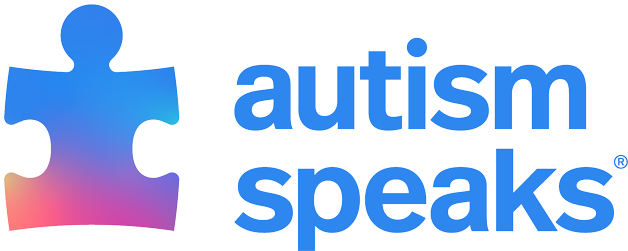Things to Look For in Your Child's Team
Challenging Behaviors Tool Kit
People with autism are often quite complex, so it is helpful to take a broad approach when evaluating concerns, and deciding how to provide appropriate support. In order to meet their various needs, many people with autism, especially those with challenging behaviors, need a team to develop specialized and individualized care.
When looking for members of your team, it might be helpful if you first go through the list of questions included below so that you have a sense of your own expectations and perspectives and can find a good match. Also keep it mind that certain personalities and styles will fit you or your child better than others.
Person-centered approach:
Professionals who think of your child as a person first—not the disability or the behaviors—will be the most helpful in discovering his strengths and his challenges. A person-centered approach will allow your team to find the tools and strategies that will be most helpful to him as an individual and to you as a family. A family-centered approach is also important, so it is essential to consider the values, priorities and specific needs of your family.
- What do you see about my child that you think is meaningful? Helpful? Different?
- What are his strengths? What can you see of his preferences and fears?
- This concern is as much about the questions the provider asks you, as it is about how he answers your questions. Does he try to understand your loved one, family dynamics, priorities, strengths, confounding factors, etc?
Collaborative:
The challenging behaviors that might develop from a variety of factors will require many points of view. There may be a need for multiple providers or even multiple agencies, and the team will need to work together on the person’s behalf. Collaboration also requires good communication between the members of the team. Some parents carry a notebook, an informational sheet and even makeshift brochures regarding their child to share with other team members.
- How do we communicate as a team?
- What information can you give me to share with other team members?
- How have you worked collaboratively in the past?
“I have to say, we were lucky enough from the beginning to have assembled a group of fine people who had the very best intentions of helping my son Eli. But a few months into his preschool year, after Eli’s progress seemed to have stalled, the school psychologist realized that we were not communicating well enough with each other. We were a patchwork team in which one hand hardly knew what the other one was doing. Once we started holding monthly team meetings at the school where we could coordinate what each person found helpful, Eli really started to make a lot of progress. Keeping a daily communication book in his backpack (and now an email chain) was terrific because it kept us all in the loop and it was a way to document everyone’s ideas.” – SW, a mother
Broad thinking approach:
Given the complexities and variability associated with autism, it is critical that team members think about all of the possible driving and complicating factors that might influence an individual’s behavior. (See Things to Consider) Especially when a challenging behavior is new or has dramatically increased, medical issues should be considered early in the evaluation process.
- What do you know about other interventions?
- Do you have any suggestions for other team members with ____ expertise who might be helpful?
- Do you think _____ might reflect something physical or emotional?
- Is there something else we should be considering?
Experience with Autism:
Especially when it comes to challenging behaviors, it is important to try to connect with providers who are experienced with autism. For example, a doctor who understands that a minimally verbal child cannot report pain may have developed other ways of gathering information about possible concerns. A psychologist who understands that sensory issues may cause a child to be more anxious in certain situations may utilize a different approach to evaluation. You can learn about the provider’s experience by asking at his office, or by connecting with school or agency staff, other parents, or local support groups for suggestions and recommendations.
- What is your experience in working with individuals with autism? This age group? This type of challenging behavior? This intervention plan?
Commitment to evidence-based interventions:
Team members should focus on medications, interventions and programming that research has shown to be effective. However, it is important to remember that each individual should be treated as such. An intervention that has been validated in a diagnosed co-occurring condition, such as depression, should not be tossed aside just because it has not been established as a treatment in autism. The team should treat the person and the presenting symptoms, not the ‘autism.’ In addition, the field of autism is evolving, and for many interventions the research has not been done. A lack of research may not mean a lack of effect or relevance to your child’s situation. Consult other team members to help you assess suggestions, but also know that you might not all agree. You should work within your team to weigh risks and benefits.
- What does the research say about the use of this intervention for ____?
- What other information is available?
Professional judgment:
While research studies show the general effects of an intervention across a population, an evaluation of effectiveness should take place for interventions used with any specific person. Assessing effects requires set targets, goals and protocols, as well as a plan for collecting and analyzing data. Data analysis is important so that you know what is working, and when and if alternate treatment choices should be considered.
- What is the target behavior of this intervention?
- How will we know if it is working? What are we tracking?
- What are the side effects?
- What is our role in the intervention?
Responsiveness:
Providers should give you as much information as you need to understand the intervention and your role in it. They should listen to your concerns and priorities—cultural, familial, financial, etc.— and be able to adjust interventions to make them work for your family, the team, and the individual’s needs. Voice your concerns and challenges so the providers can best support you and your loved one.
- What is my role in this plan or intervention?
- How can we adjust _____ to take into consideration our family’s needs? My travel schedule? Our insurance plan?
- This is too hard. Data reflects that it is not working. This medication is making him worse. What do we do now?
Licensing, board certification or other credentials:
It might be helpful to request references and talk to others who have used a provider you are considering. A list of certification and credentials required for the team members above is listed in the tool kit.





